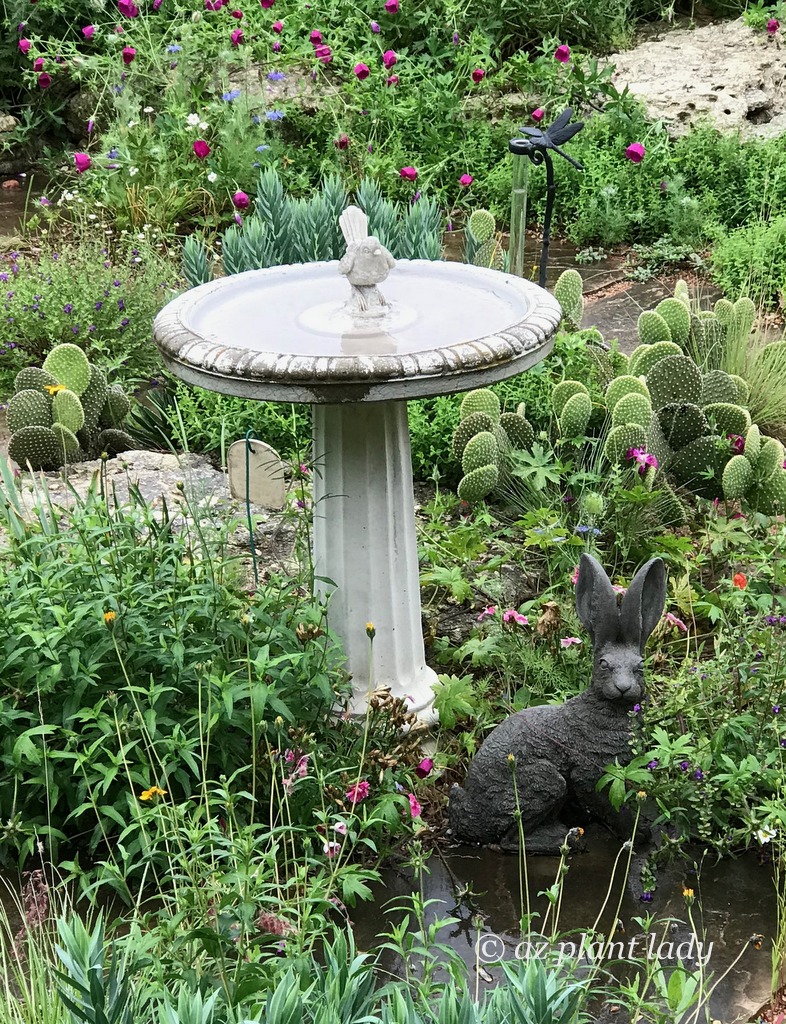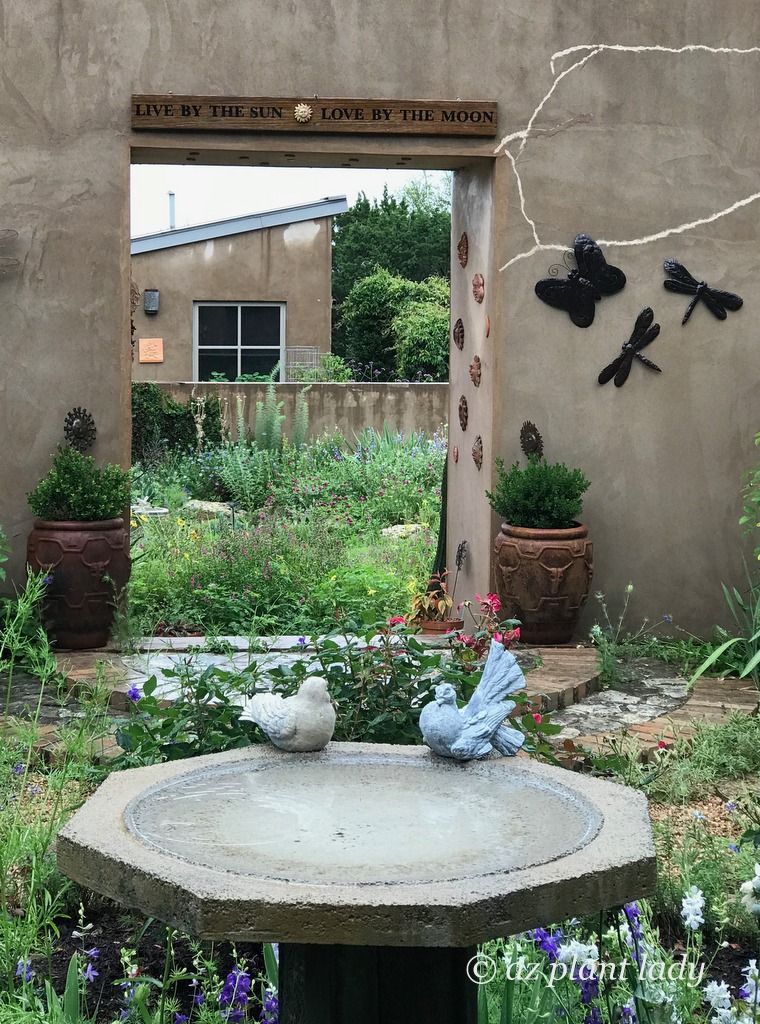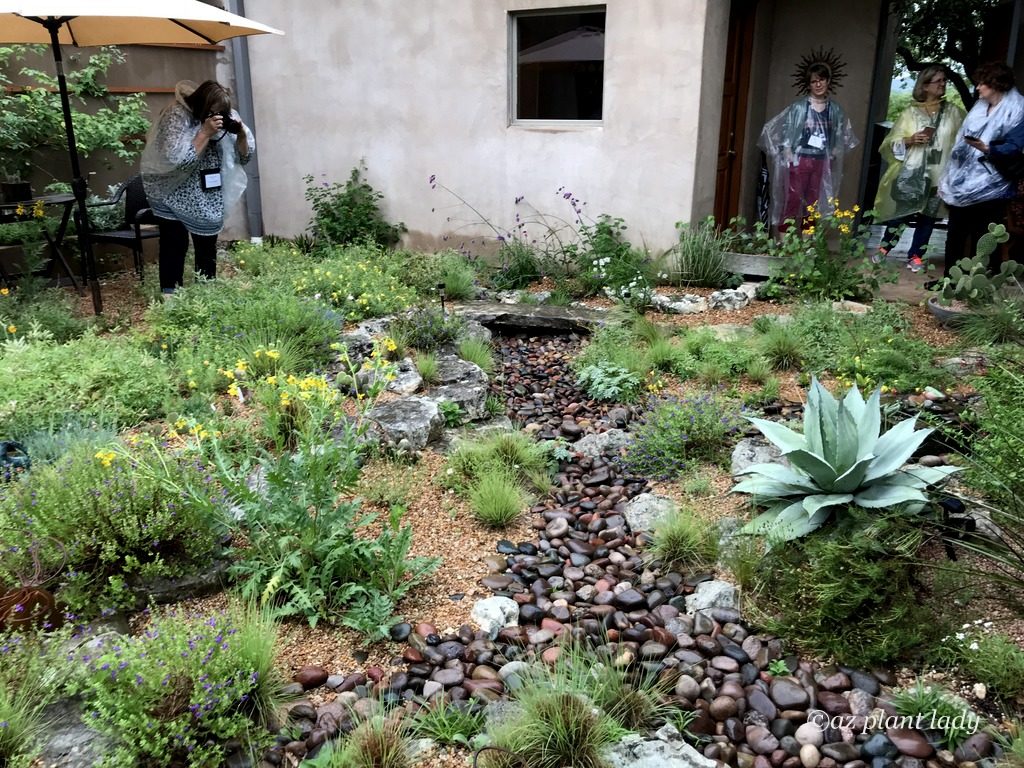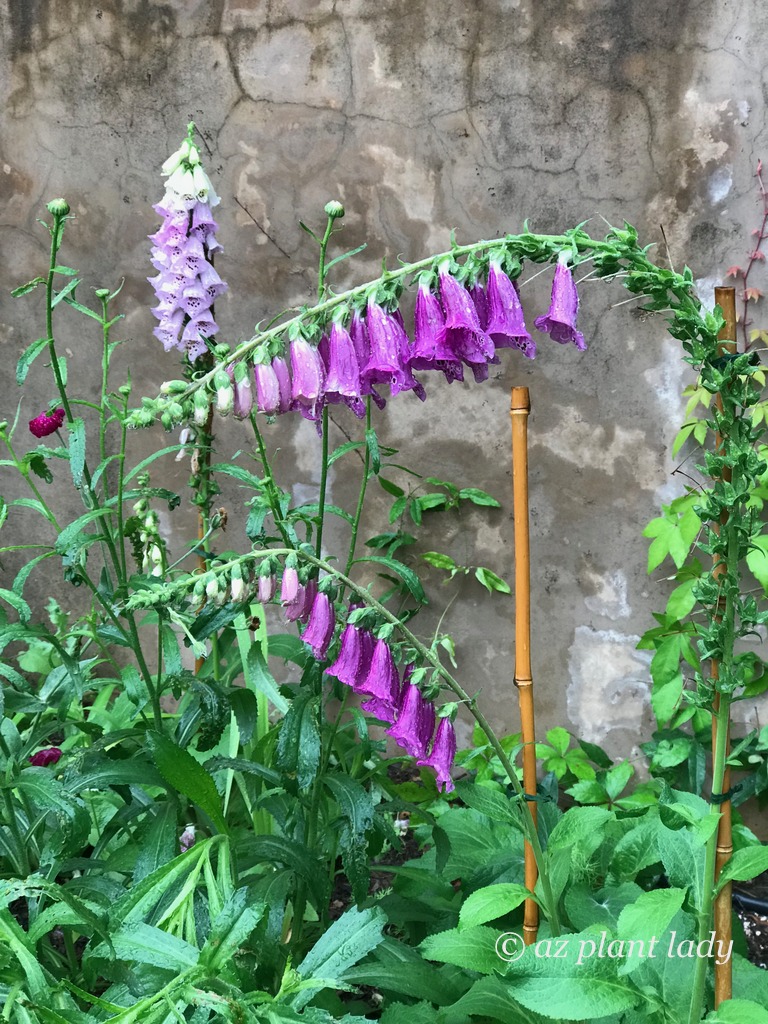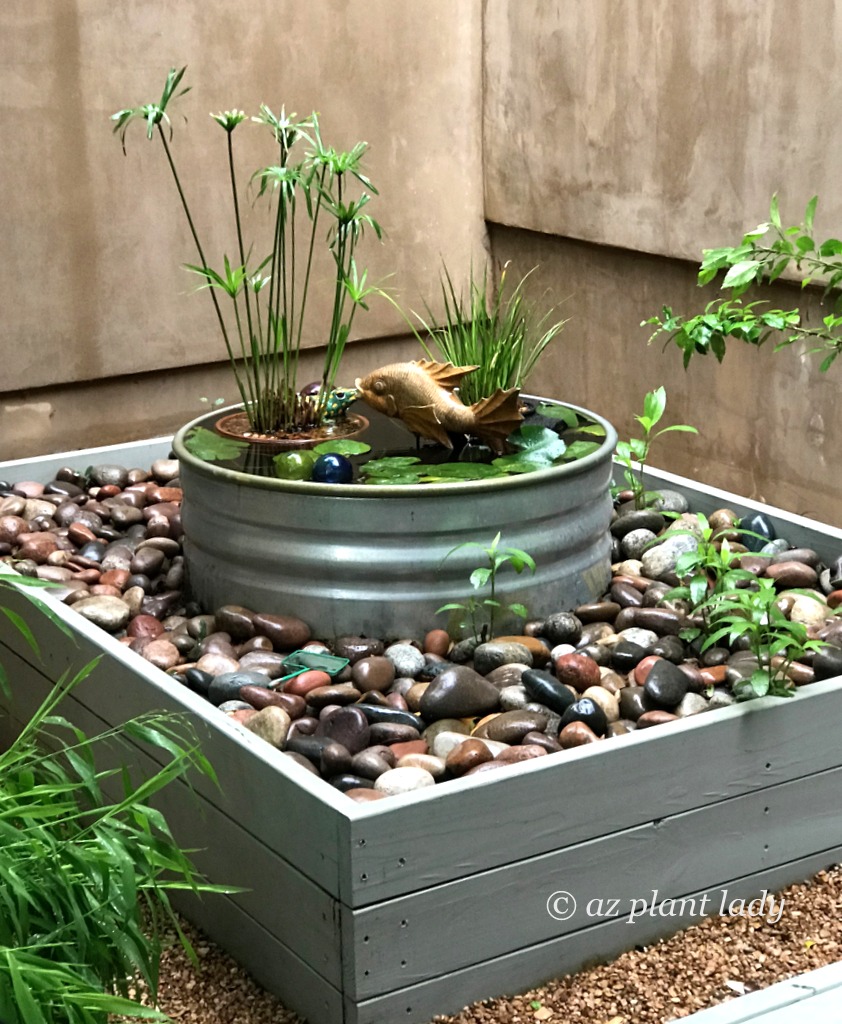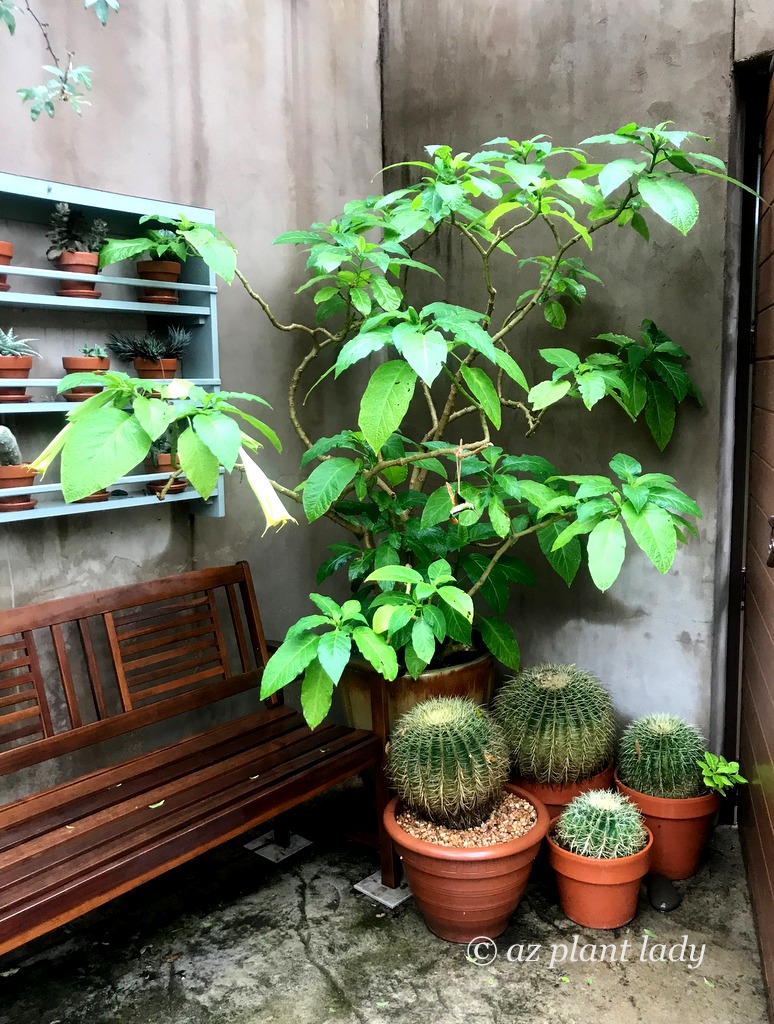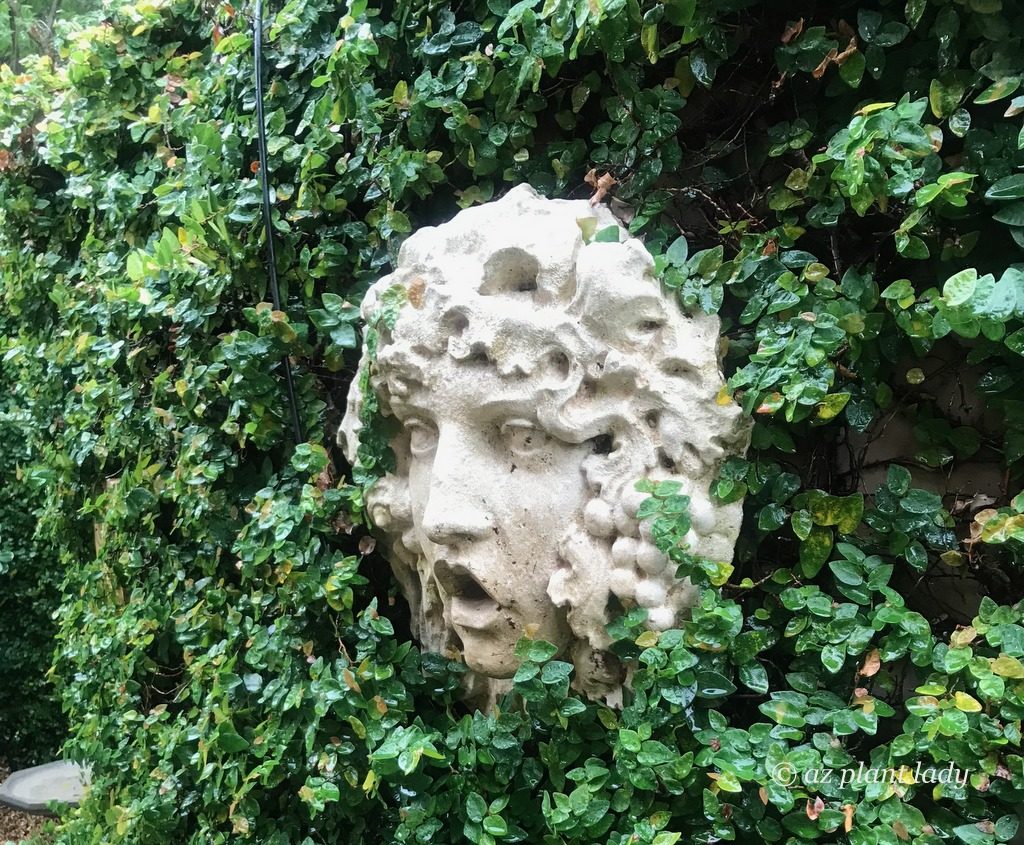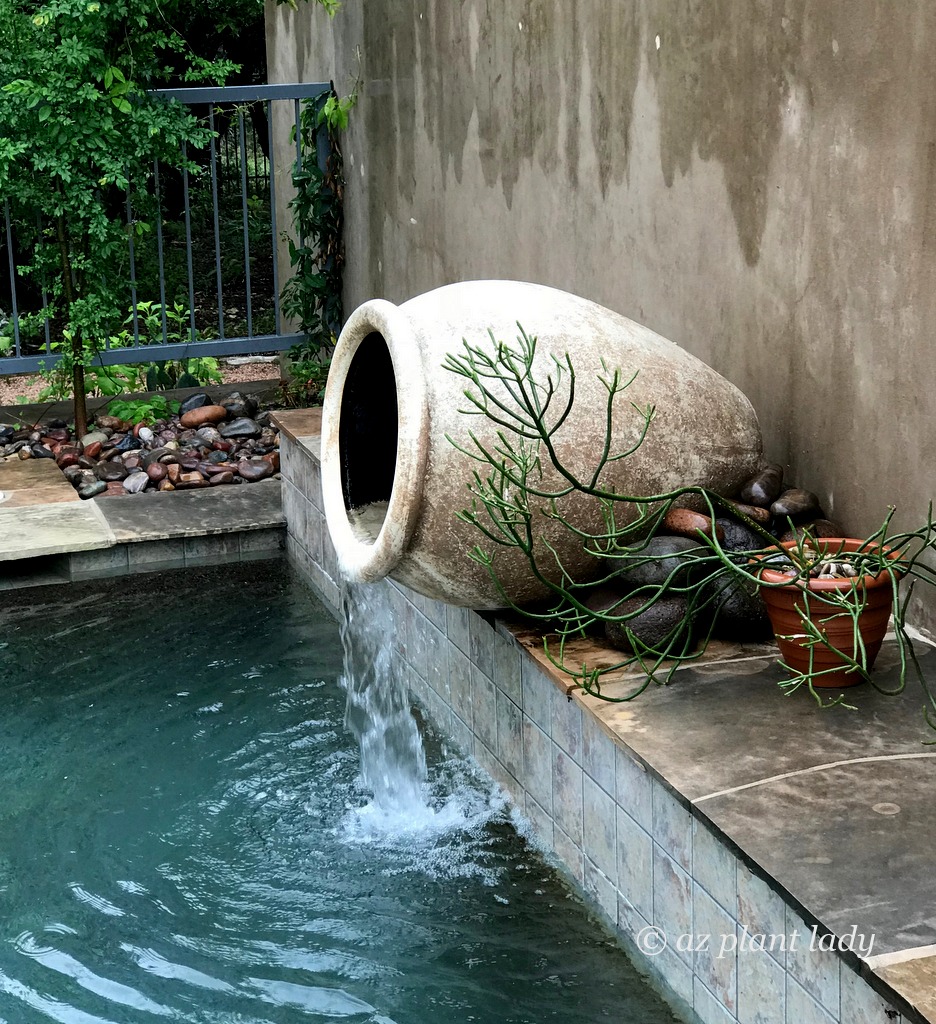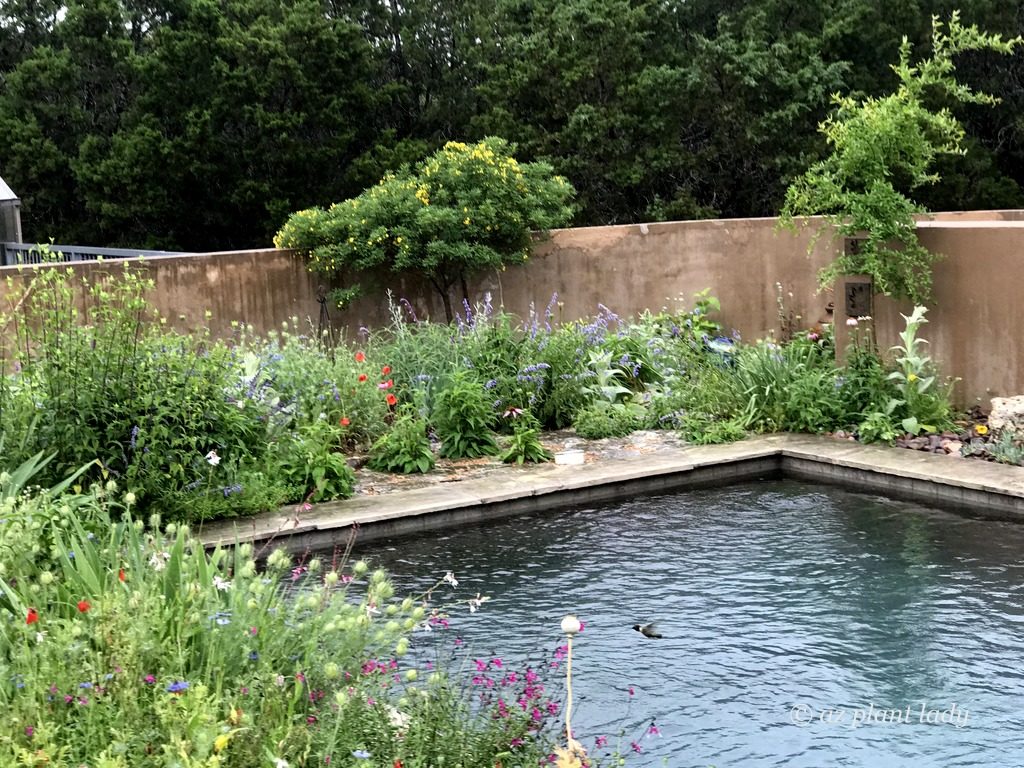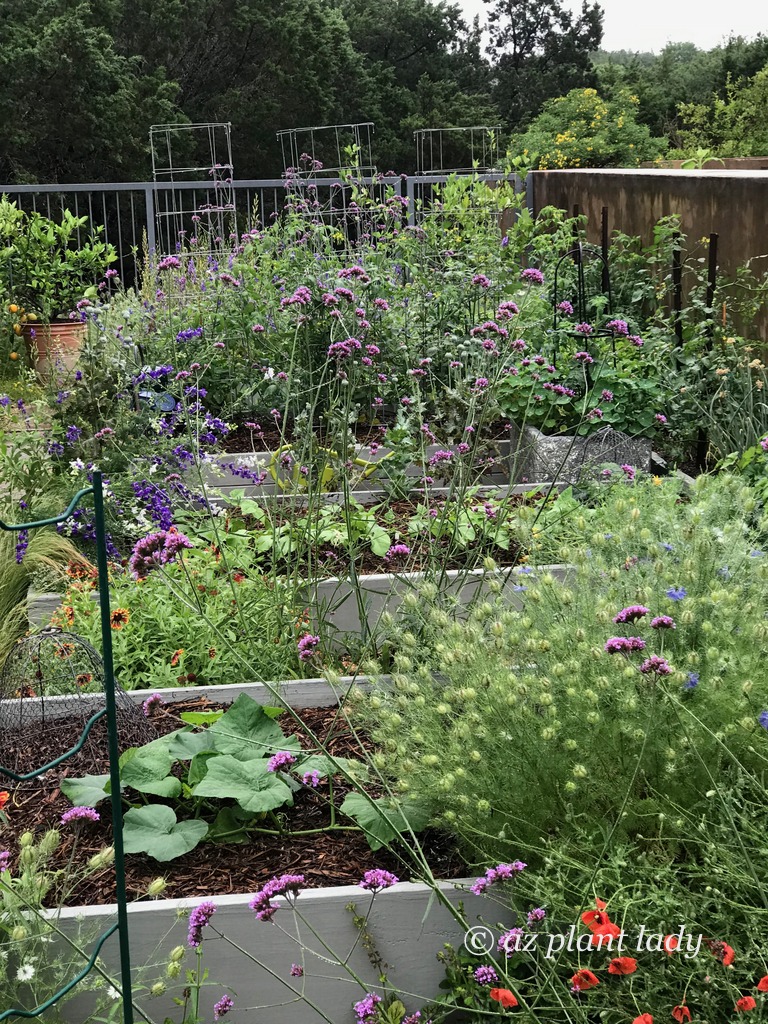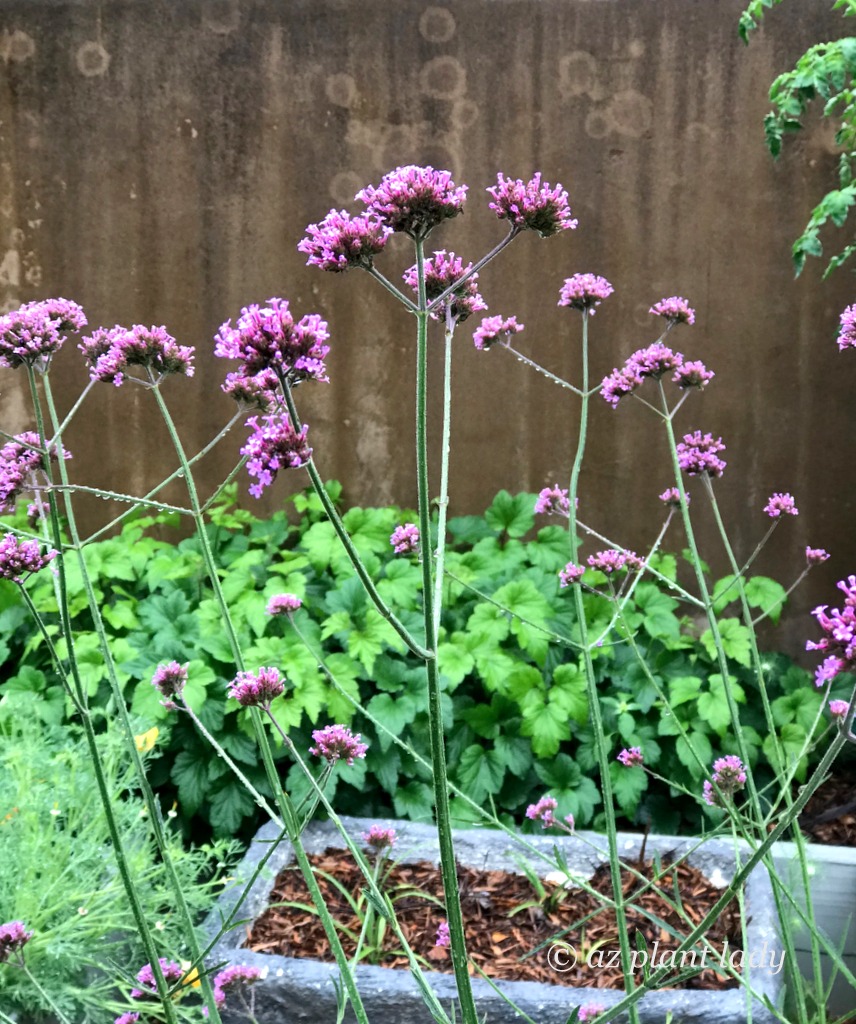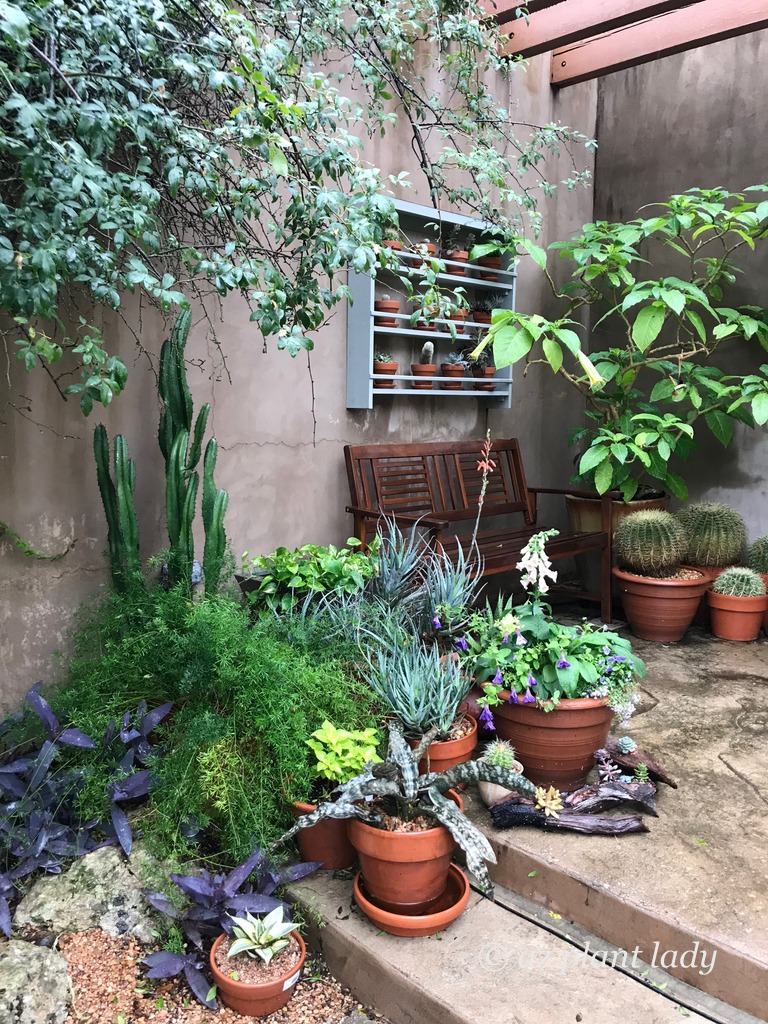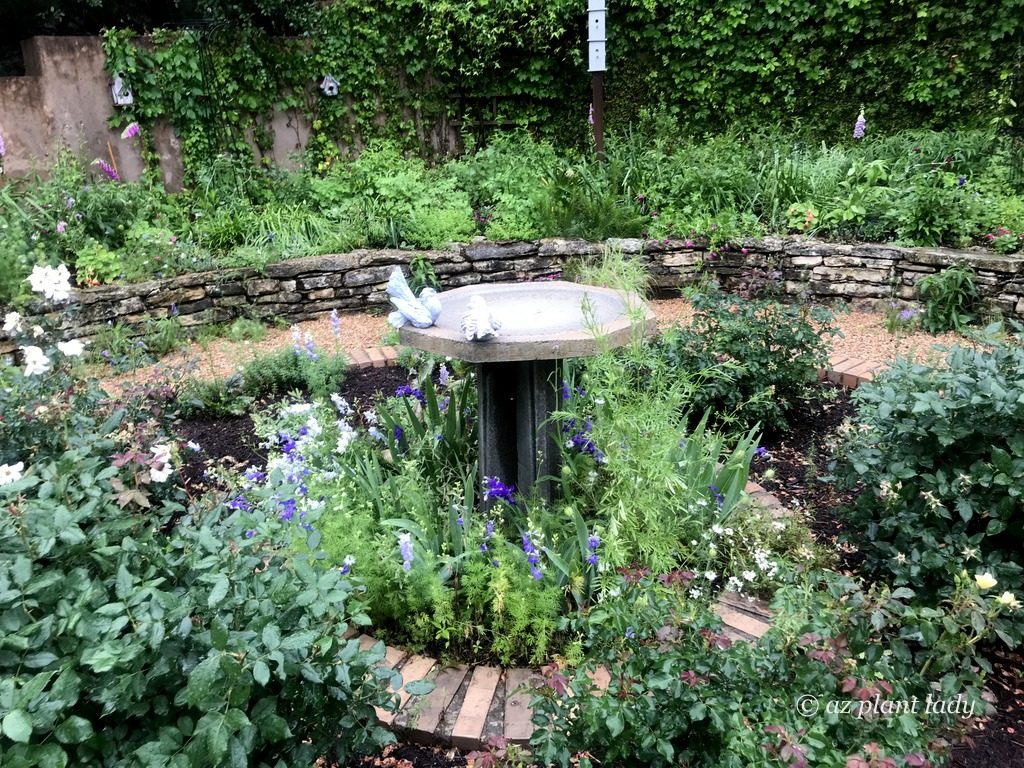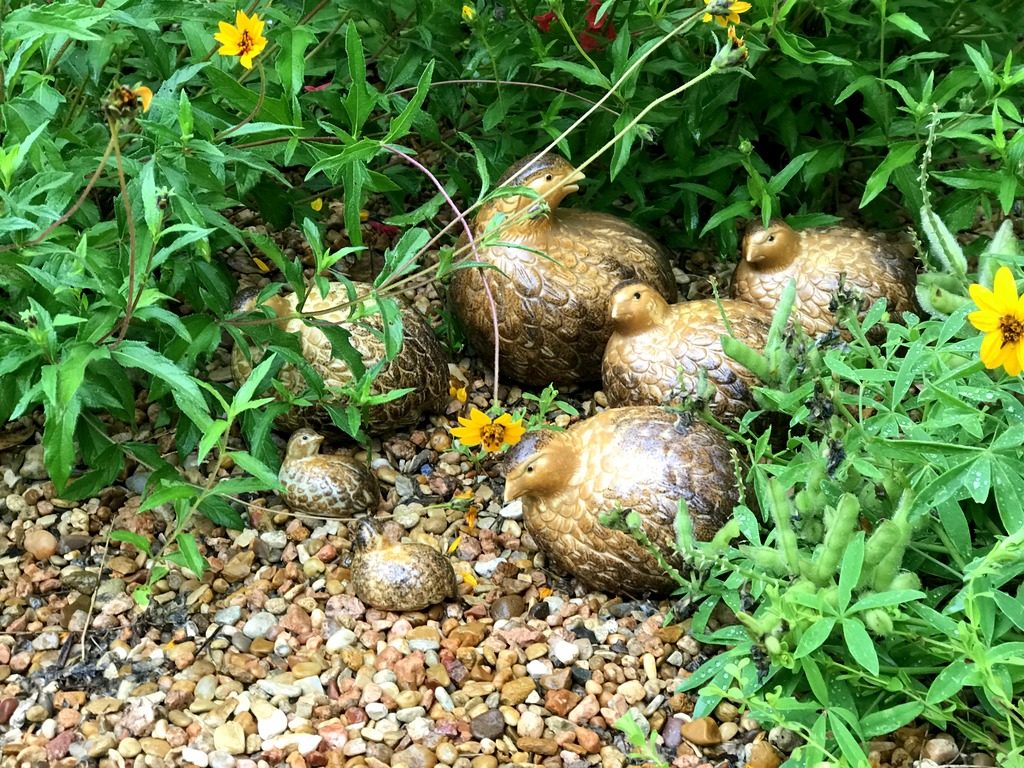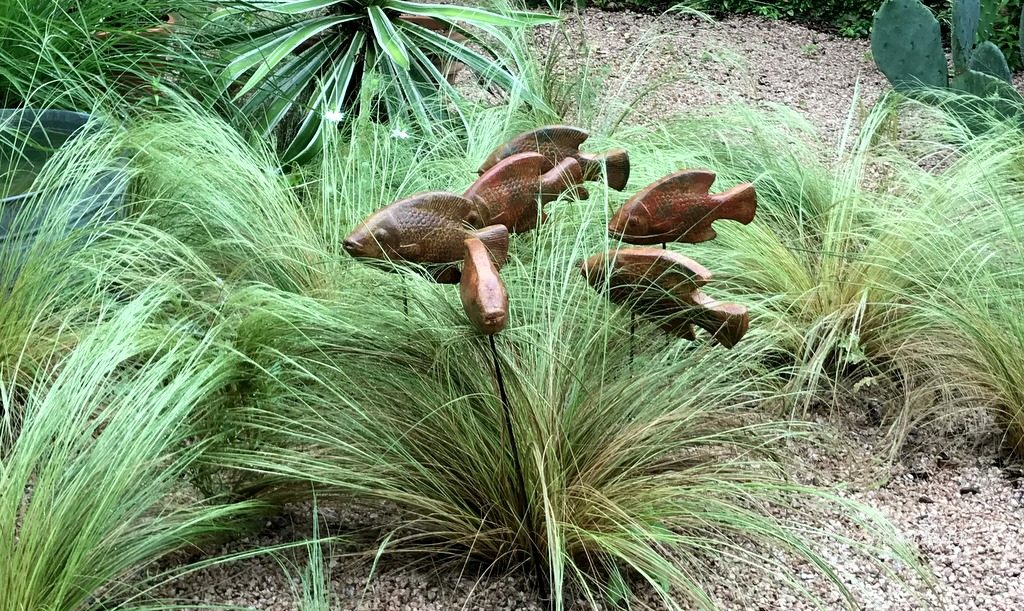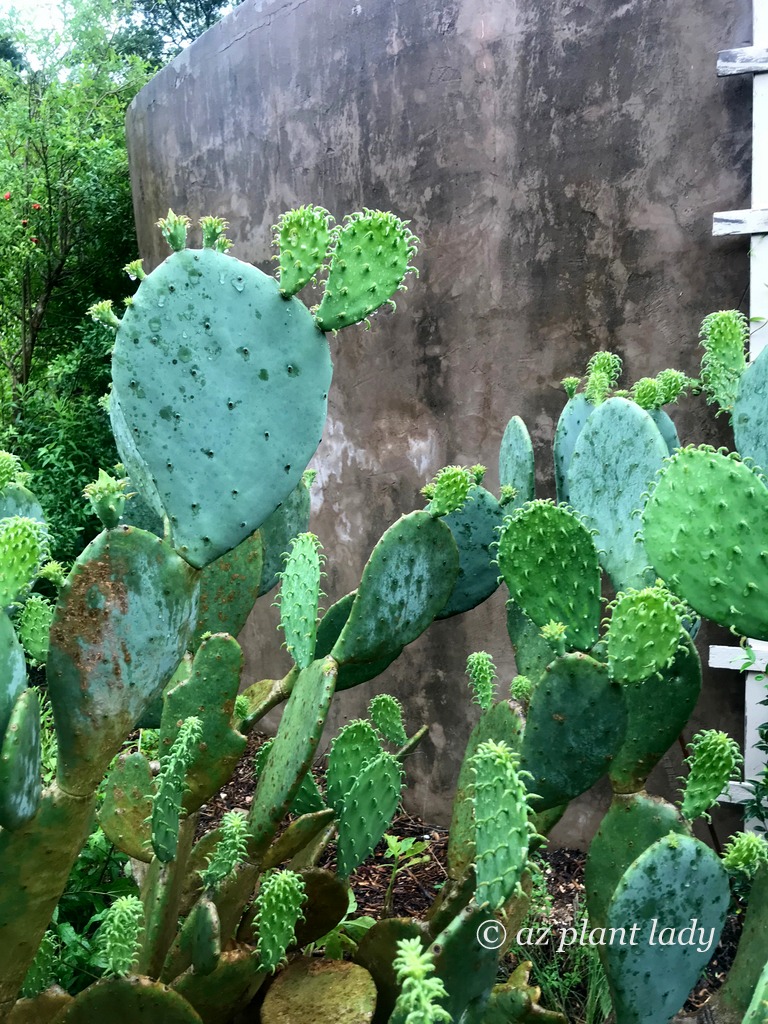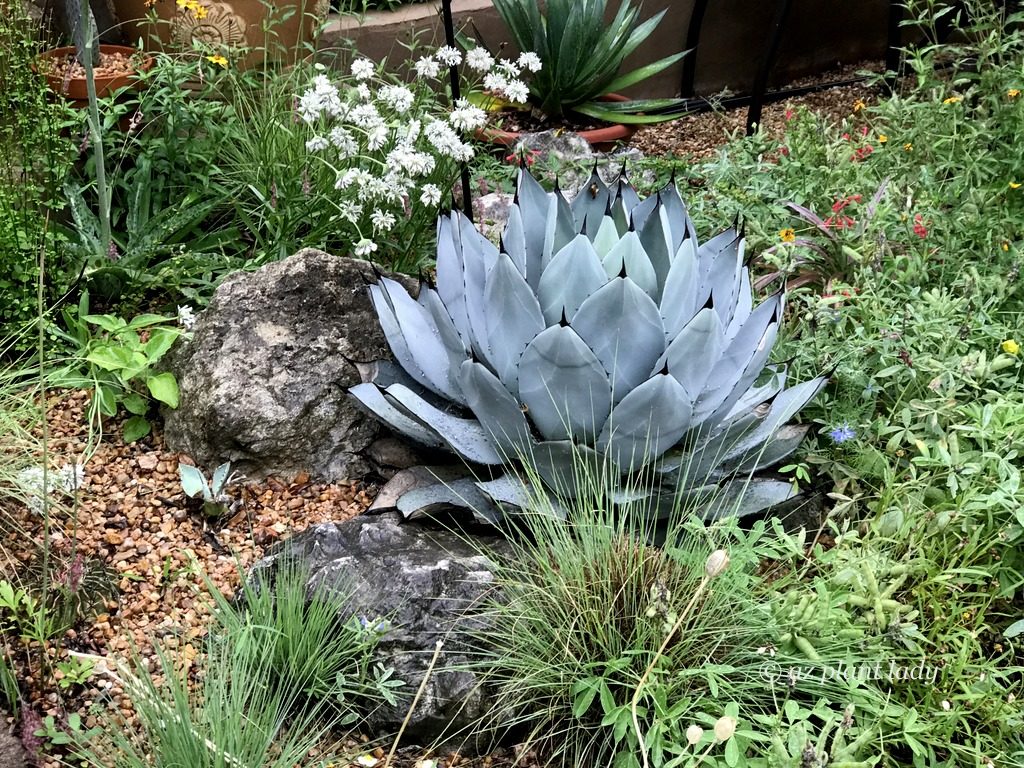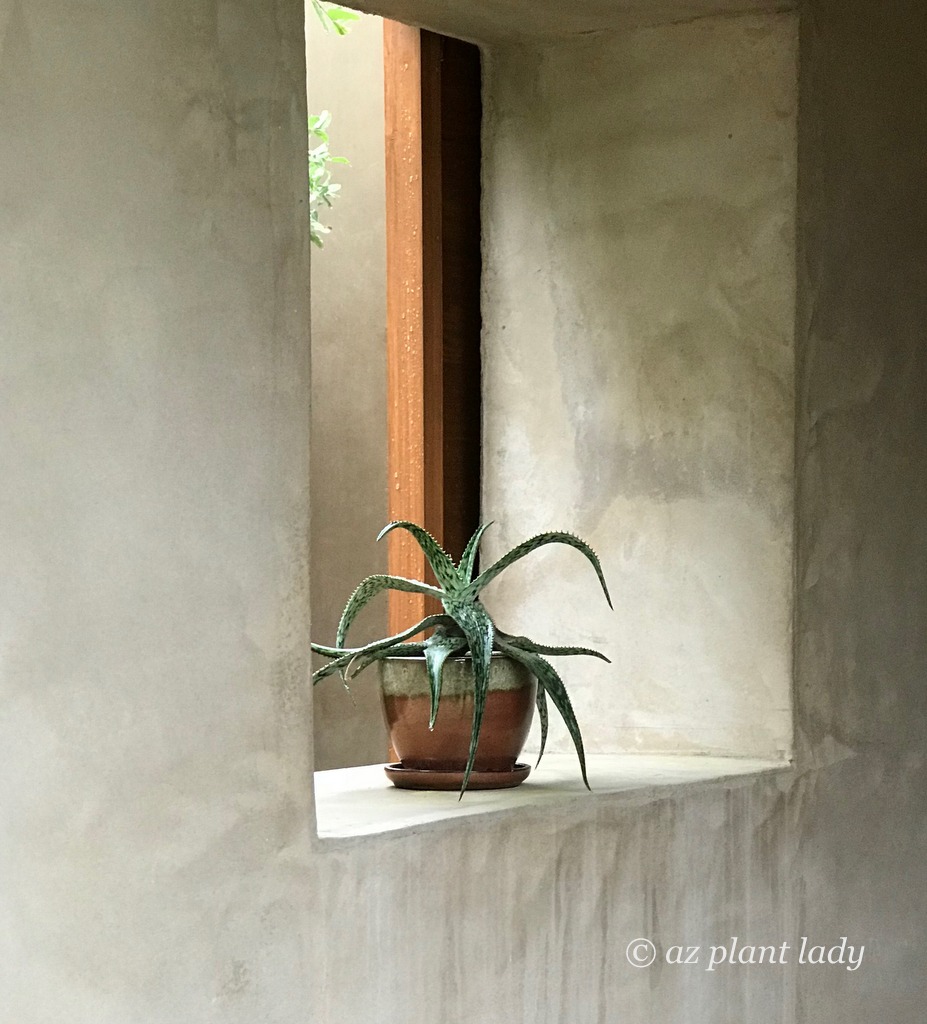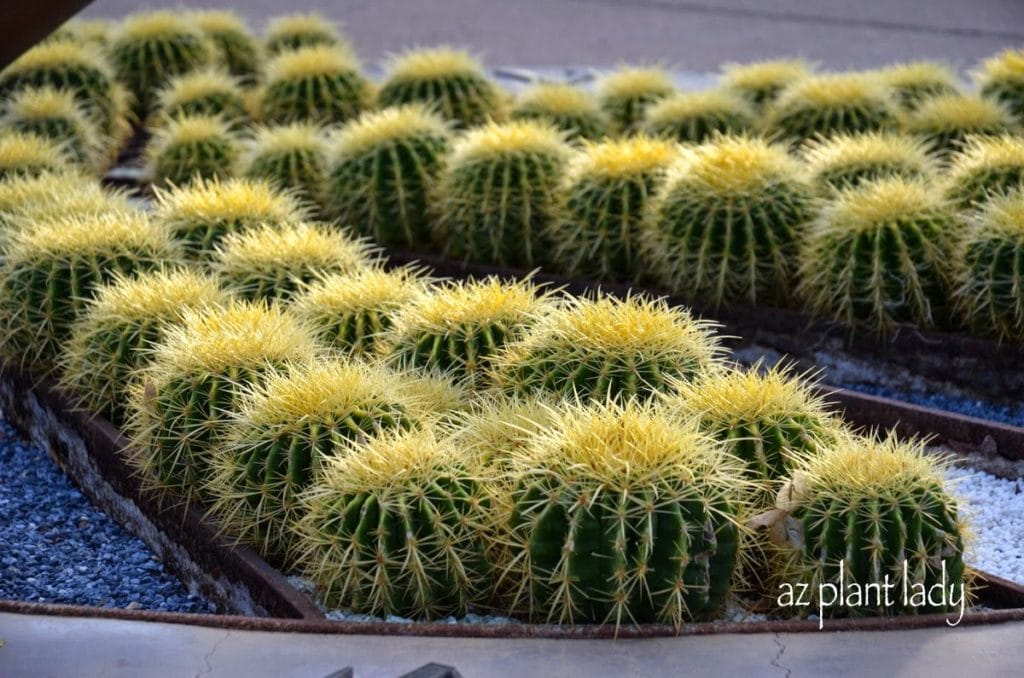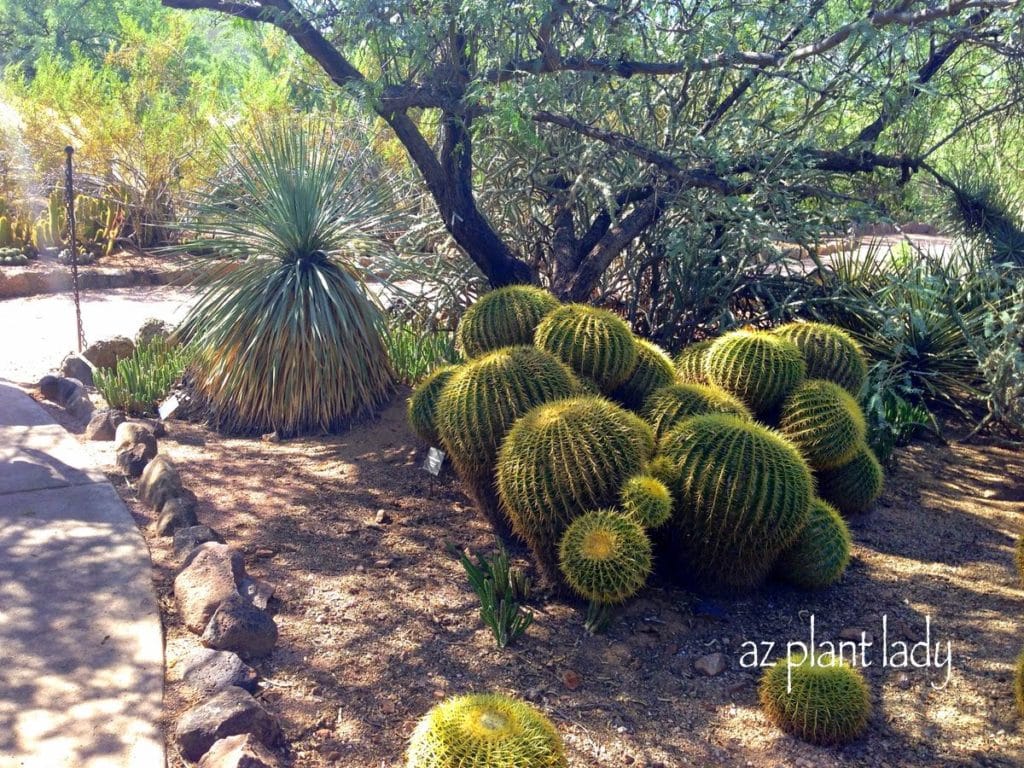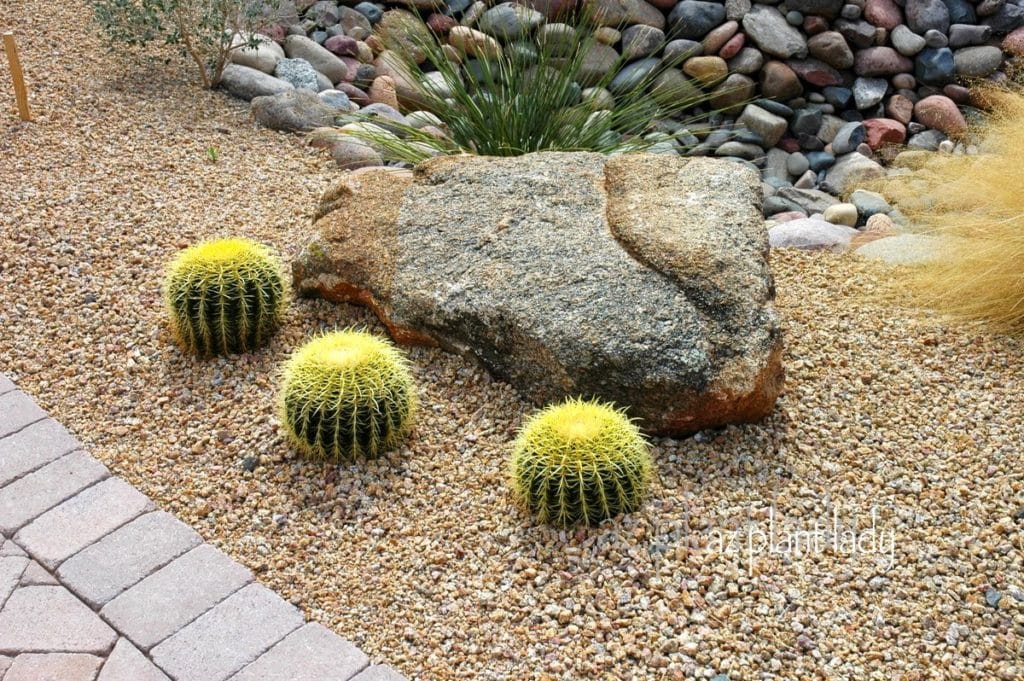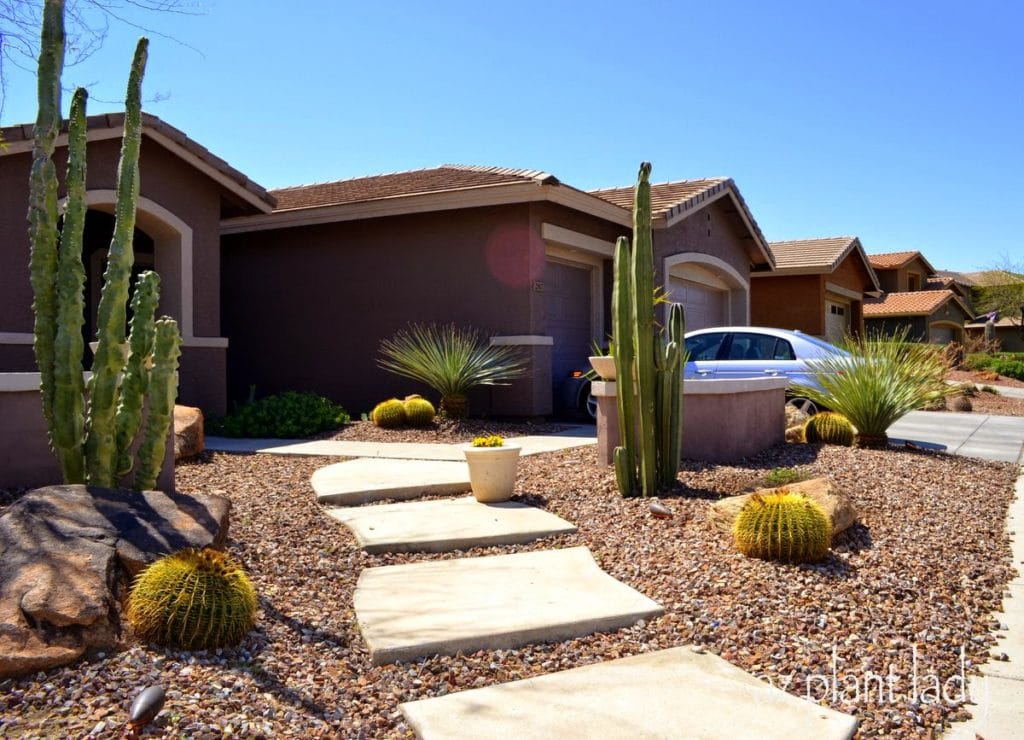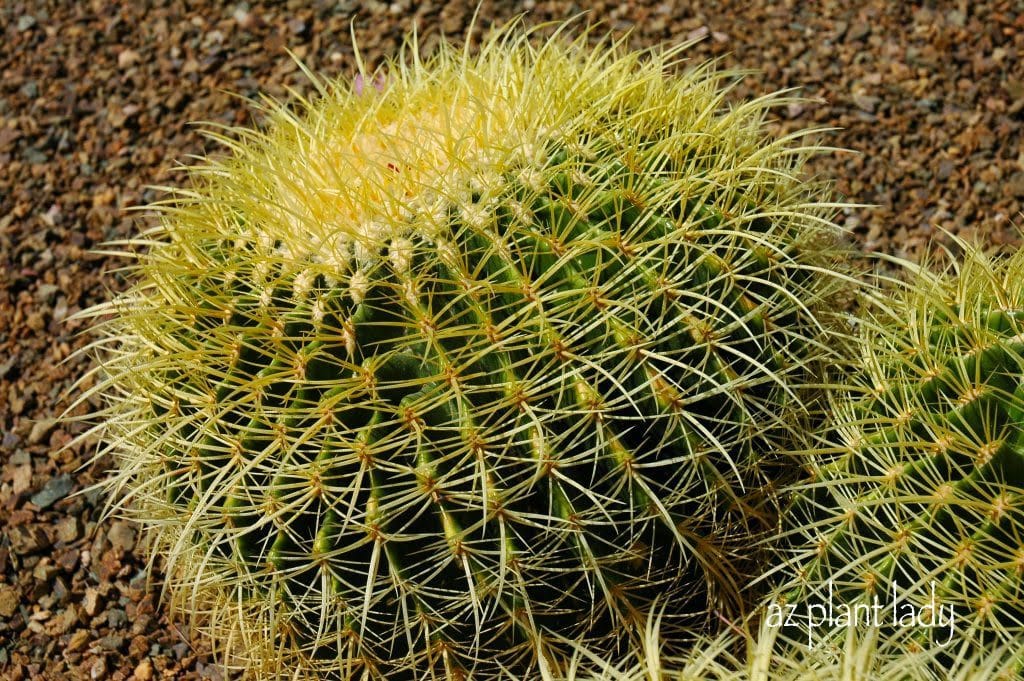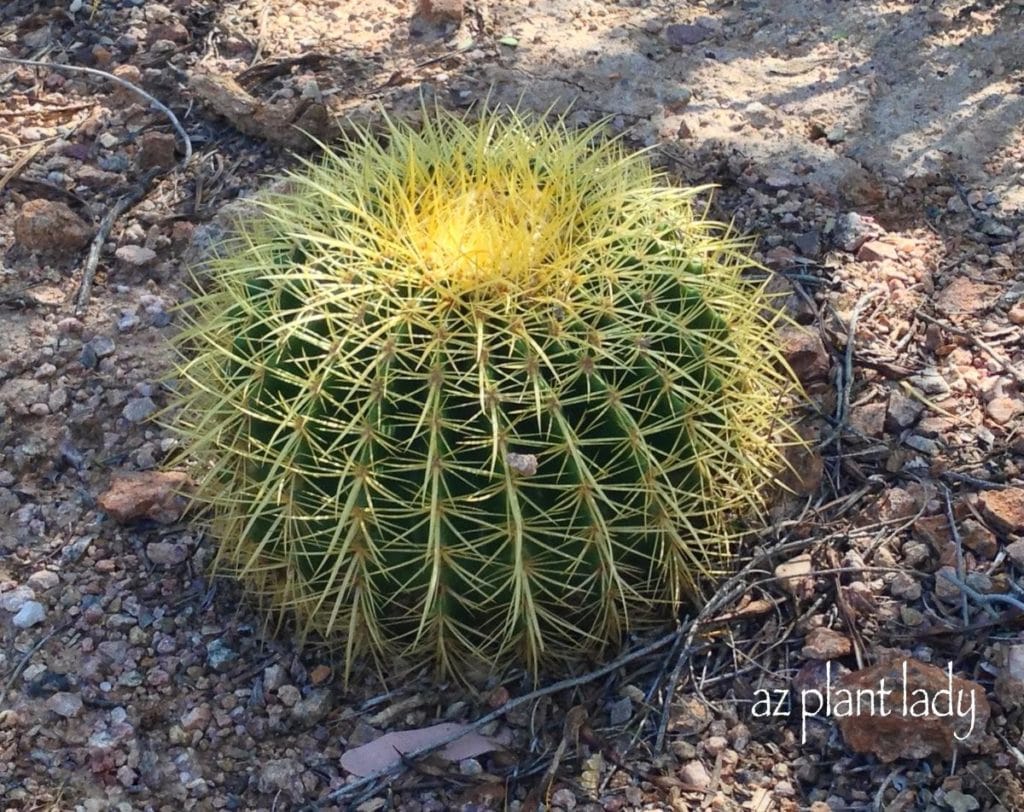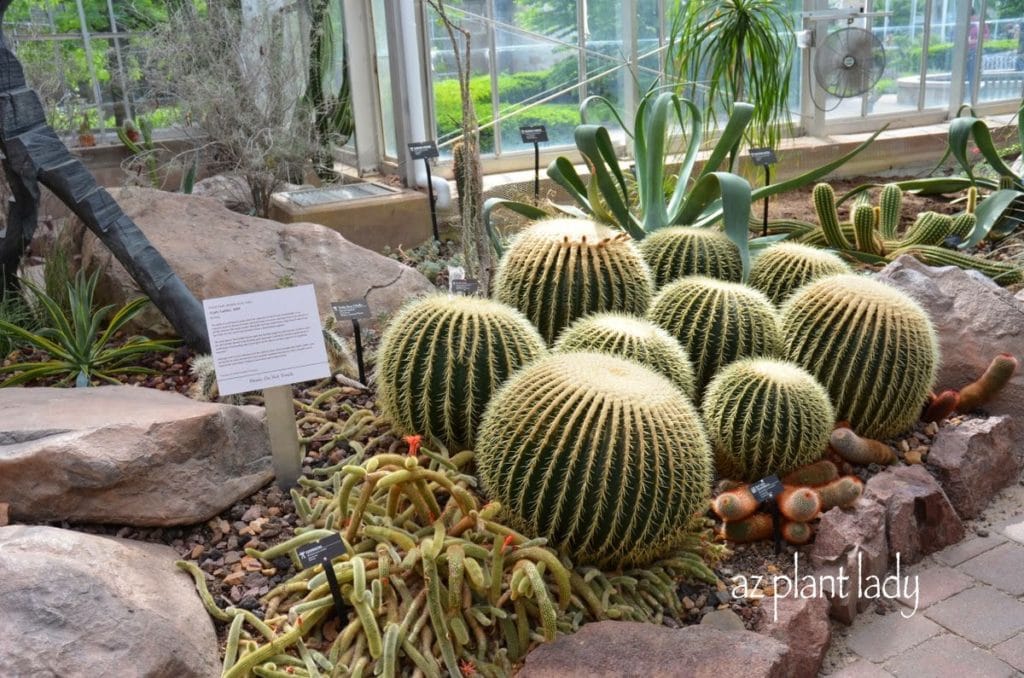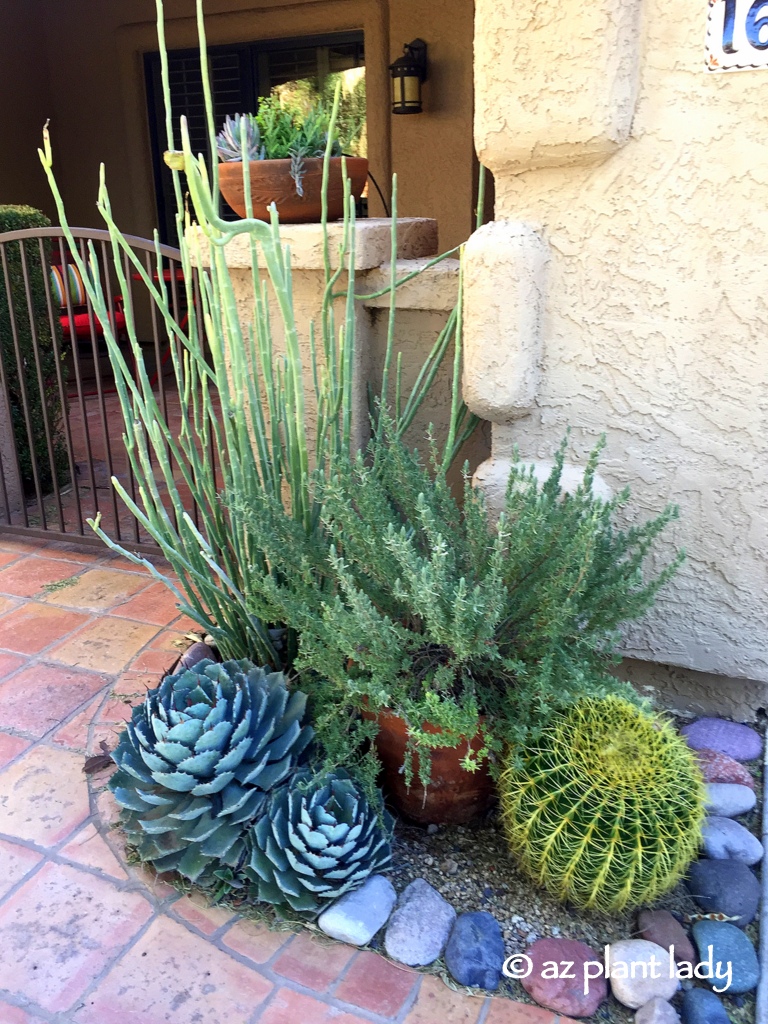
Artichoke agave (Agave parryi ‘truncata’), golden barrel cactus (Echinocactus grusonii), and lady’s slipper (Pedilanthus macrocarpus),
Does the idea of having to venture outside, when temperatures are above 100 degrees, to care for your garden have you thinking twice? I must admit that there have been times when I have let the plants in my landscape fend for themselves in summer after setting the irrigation controller. But, there is often a price to pay afterward when you have to play catch up with extra pruning and other maintenance.
There are however many different plants that thrive in summer with little fuss allowing you to enjoy the comforts of your air-conditioned home while viewing your beautiful garden through the windows. Here are some of my favorite fuss free plants for the summer garden.
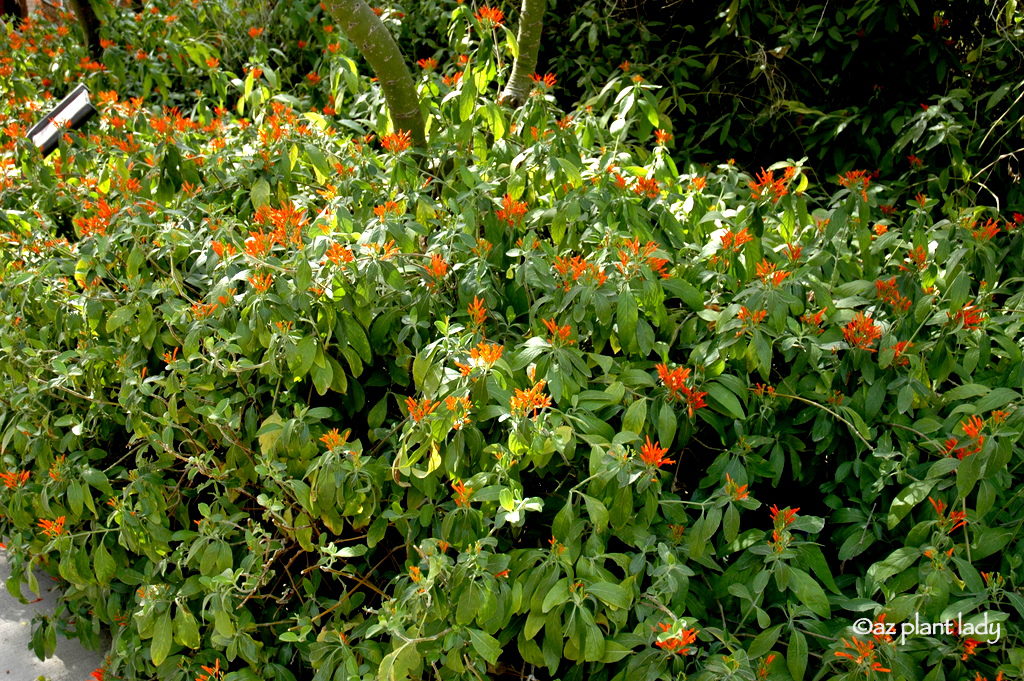
Mexican Honeysuckle (Justicia spicigera)
Mexican honeysuckle has lush green foliage and produces tubular orange flowers throughout the entire year. They do best in filtered shade and attract hummingbirds. I like to plant them underneath trees such as mesquite or palo verde.
Learn more about Mexican honeysuckle.
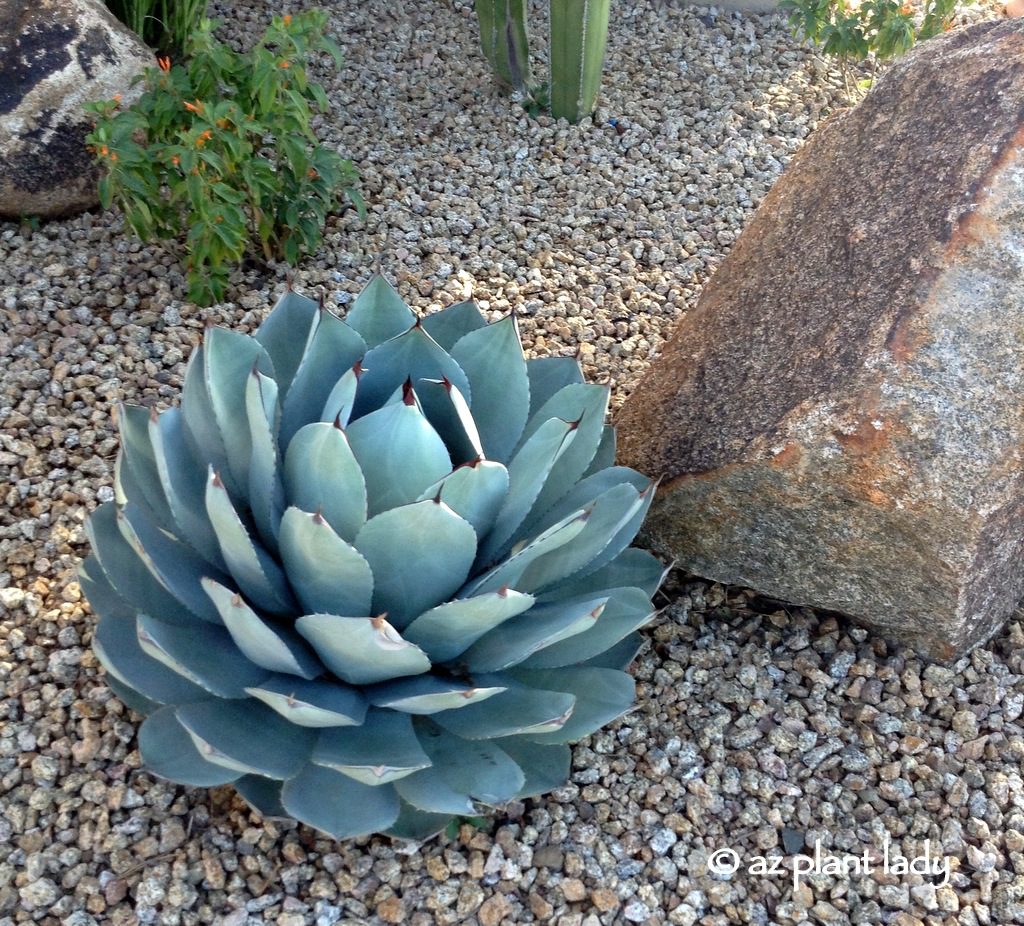
Artichoke Agave (Agave parryi ‘truncata’)
Artichoke agave is highly prized for its rosette shape, and it’s easy to see where it got its name. The blue-gray color and maroon edges add great color contrast to the garden when it is placed alongside plants with dark and light-green foliage.
Of course, these are but one species of agave that would make a delightful, fuss-free addition to the summer garden. I also recommend cow’s horn agave (Agave bovicornuta), smooth-edge agave (Agave desmettiana), and Victoria agave (Agave victoria–reginae) to name a few.
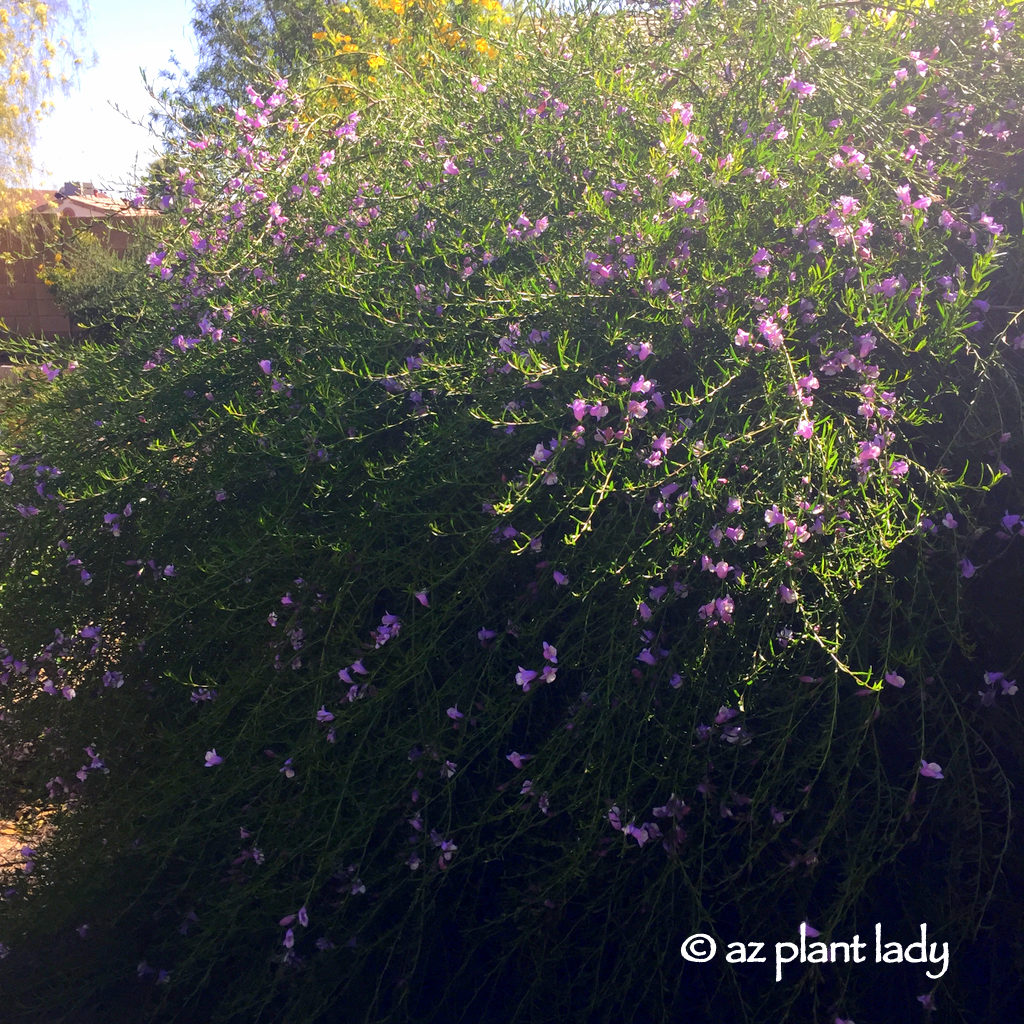
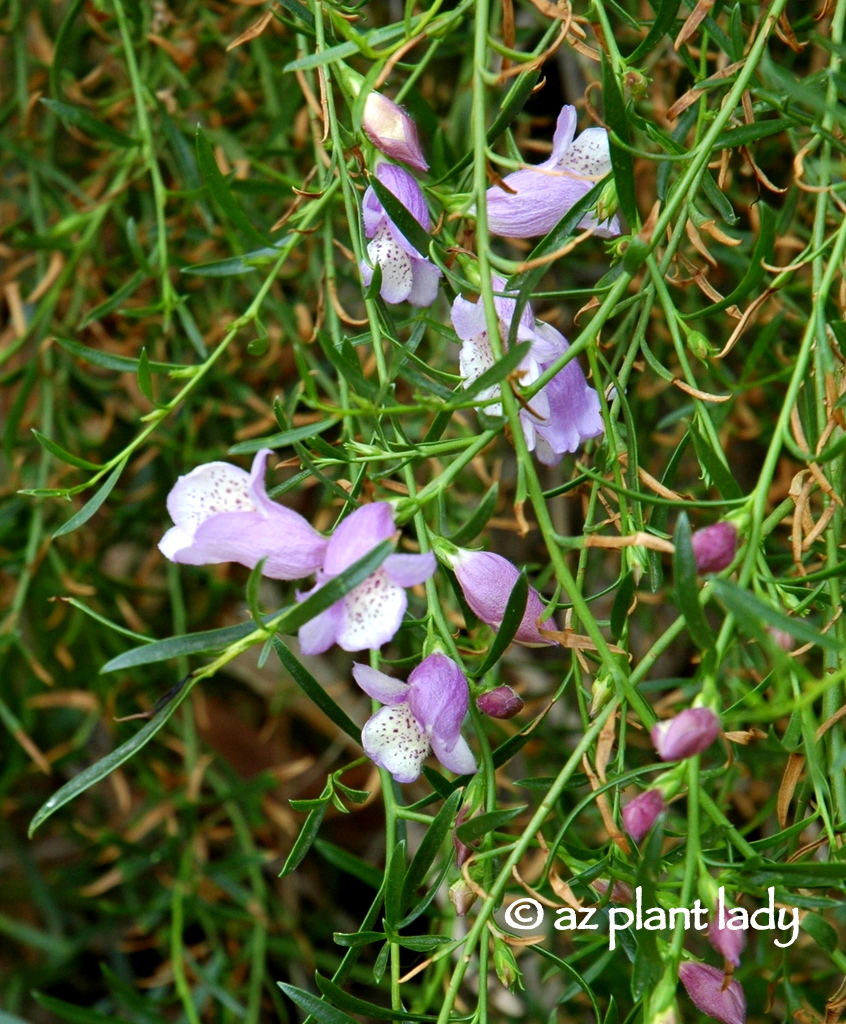
‘Summertime Blue’ (Eremophila ‘Summertime Blue’)
‘Summertime Blue’ is a delightful shrub that needs next to no maintenance throughout the year and decorates the garden with its bright green foliage and violet-blue flowers that appear spring through fall. It grows slowly but will reach approximately 6 feet tall and wide. If given enough room, it can go a year (or two) before needing pruning. While you may have to look around for a nursery that carries it, it’s well worth the effort. It is also usually found at the Desert Botanical Garden’s spring and fall plant sales.
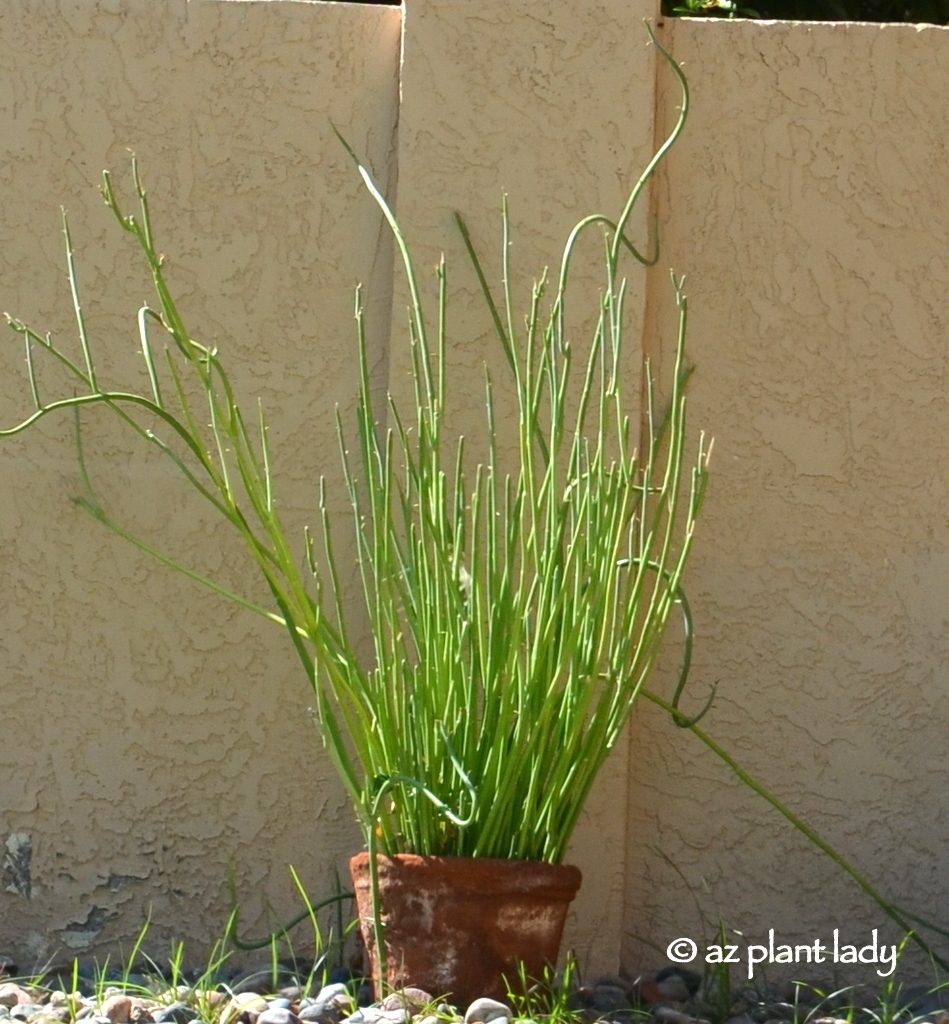
Lady’s Slipper (Pedilanthus macrocarpus)
Lady’s Slipper is a uniquely shaped succulent with thornless stems that have a ‘Medusa-like’ growth habit that is more pronounced in light shade. The upright stems add a welcome vertical element to the landscape, and small orange flowers are produced off and on through spring and fall. They can be grown in containers or planted in the ground and do well in full sun or light shade.
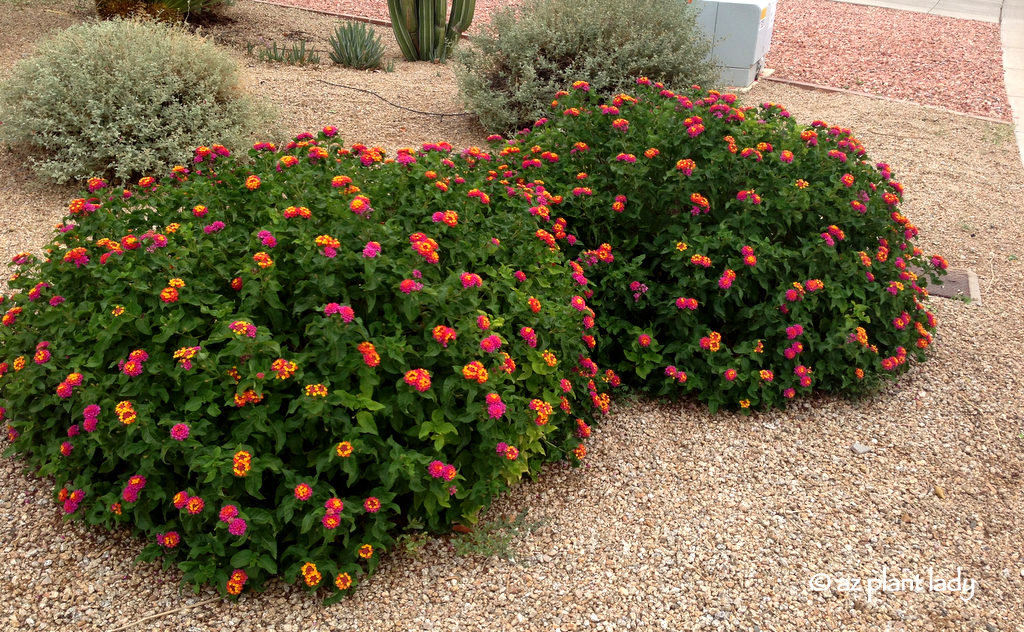
Bush Lantana (Lantana camara ‘Radiation’)
Bush lantana is a familiar sight to many who live in arid climates like ours. This species of lantana is slightly different than the trailing gold and purple lantana. It has larger leaves, grows taller, and has multi-colored flowers that vary according to the variety. Bush lantana is a great choice for a colorful summer garden as they are seemingly heat-proof.
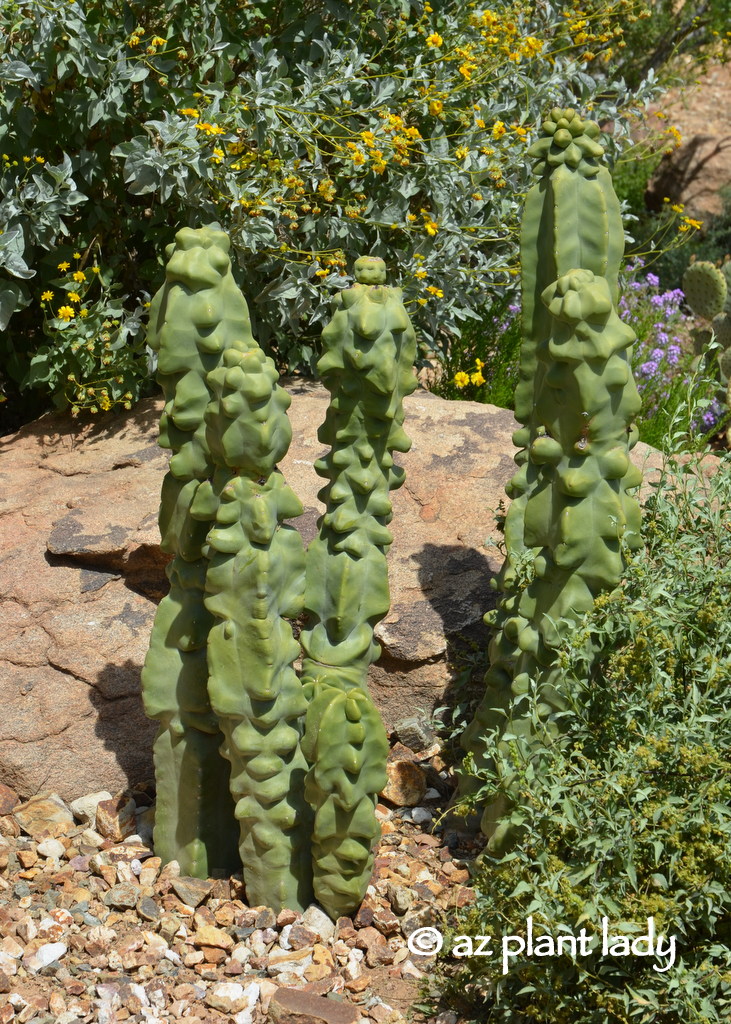
Totem Pole ‘Monstrosus’ (Lophocereus schottii ‘Monstrosus’)
Totem pole ‘Monstrosus’ has become quite a popular addition to the desert garden and it’s easy to see why with its knobby shape. Another bonus is that they are almost always thornless, which makes them suitable for areas near entries or patios where a prickly cactus aren’t welcome. Plant in full sun in a row for a contemporary look or place next to a boulder for a more natural appearance.
Learn more about totem pole cactus.
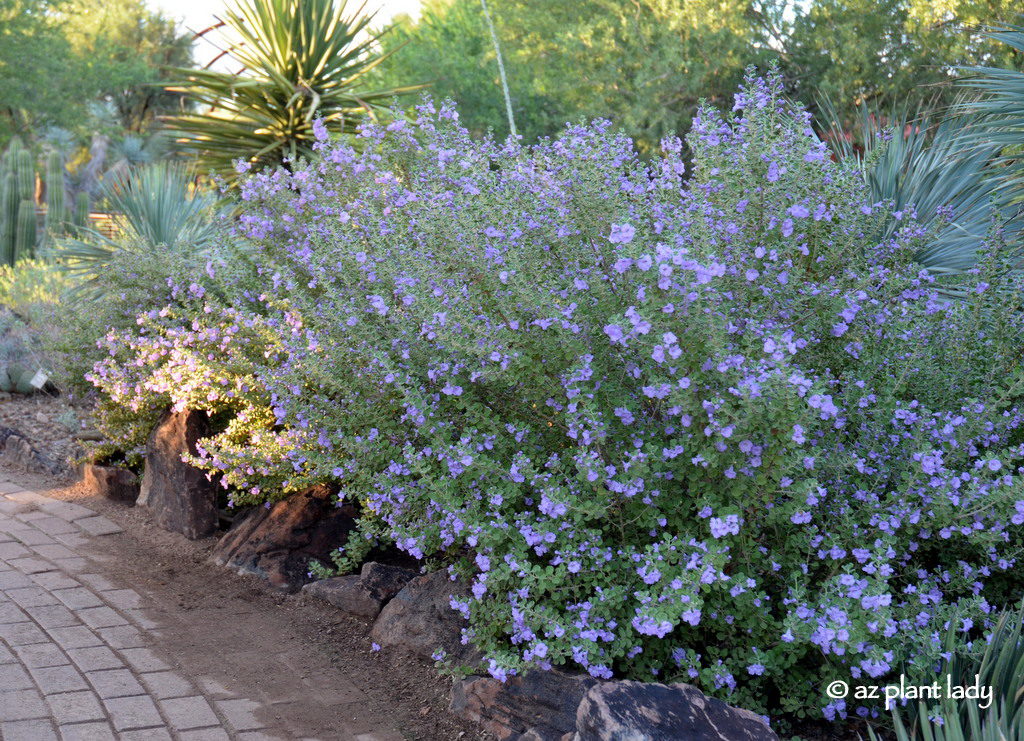
‘Heavenly Cloud’ Texas Sage (Leucophyllum langmaniae ‘Heavenly Cloud’)
‘Heavenly Cloud’ Texas sage is well worth adding to your landscape for its lovely purple blossoms that appear off and on throughout the warm season, often in response to increased humidity. All species of Texas sage do well in summer and can be nearly maintenance-free if allowed enough room to reach their 8 foot tall and wide size as well as left to grow into their natural shape. This particular species blooms more than the more common ‘Green Cloud’ Texas sage.
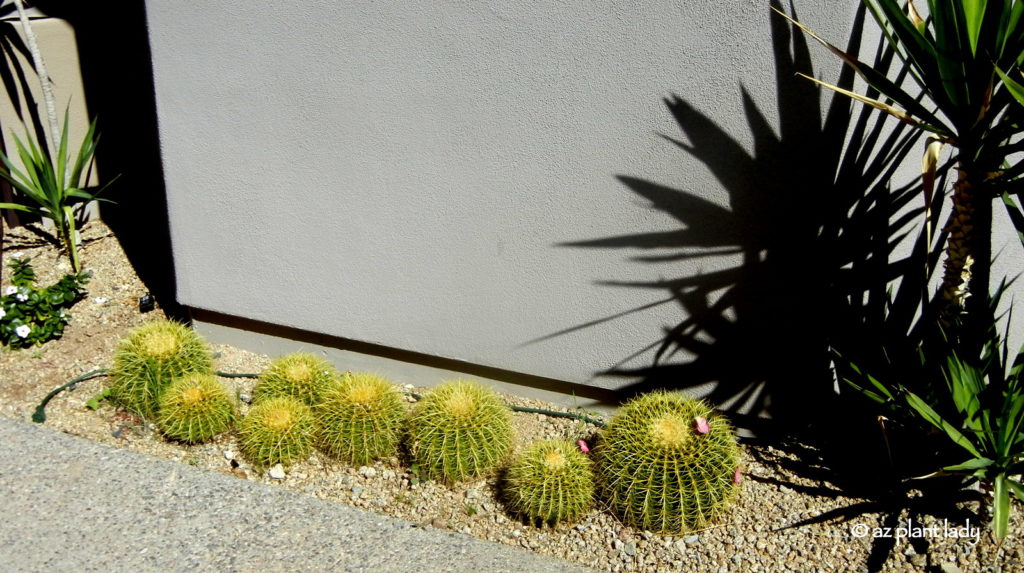
Golden Barrel Cactus (Echinocactus grusonii)
Golden barrel cactus are wildly popular, and it is easy to see why with the globular shapes and yellow coloring. This cactus is quite versatile, able to grow in both sun and light shade. I like to use it in groups of three next to boulders or in a row. They also do well in containers planted singly or along with other succulents.
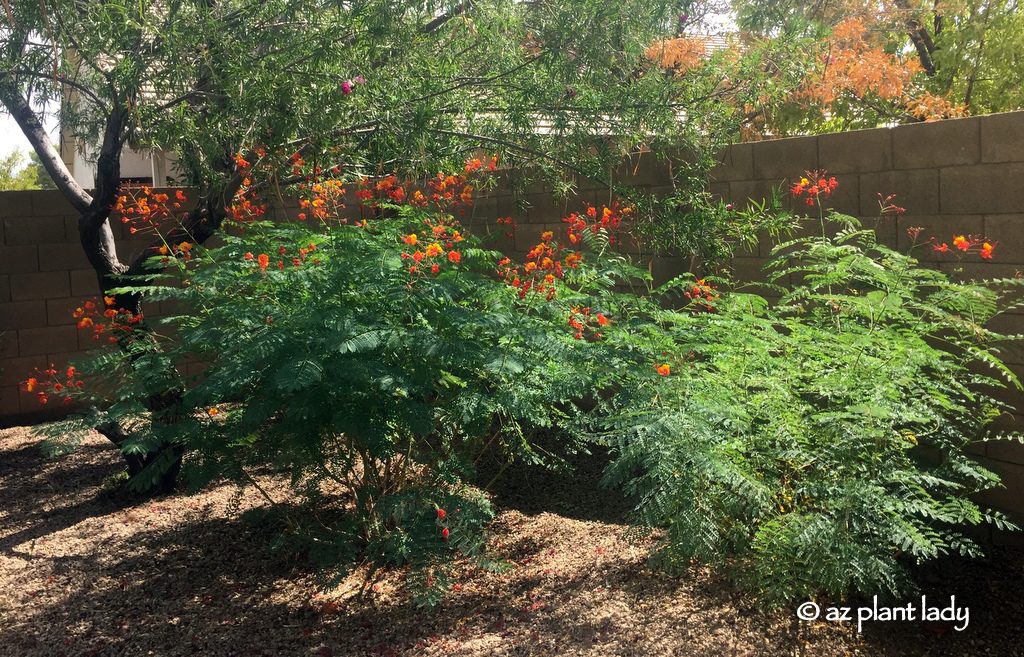
Red Bird-of-Paradise (Caesalpinia pulcherrima)
Red bird-of-paradise is one of the most iconic flowering shrubs in the low desert regions of Arizona. Also known as mexican bird-of-paradise and royal poinciana, visitors marvel at their beautiful flowers in shades of orange, yellow, and red. The striking blossoms appear in late spring and last into early fall much to the delight of hummingbirds. There is nothing to do to care for them in summer other than to marvel at their beauty.
Learn more about
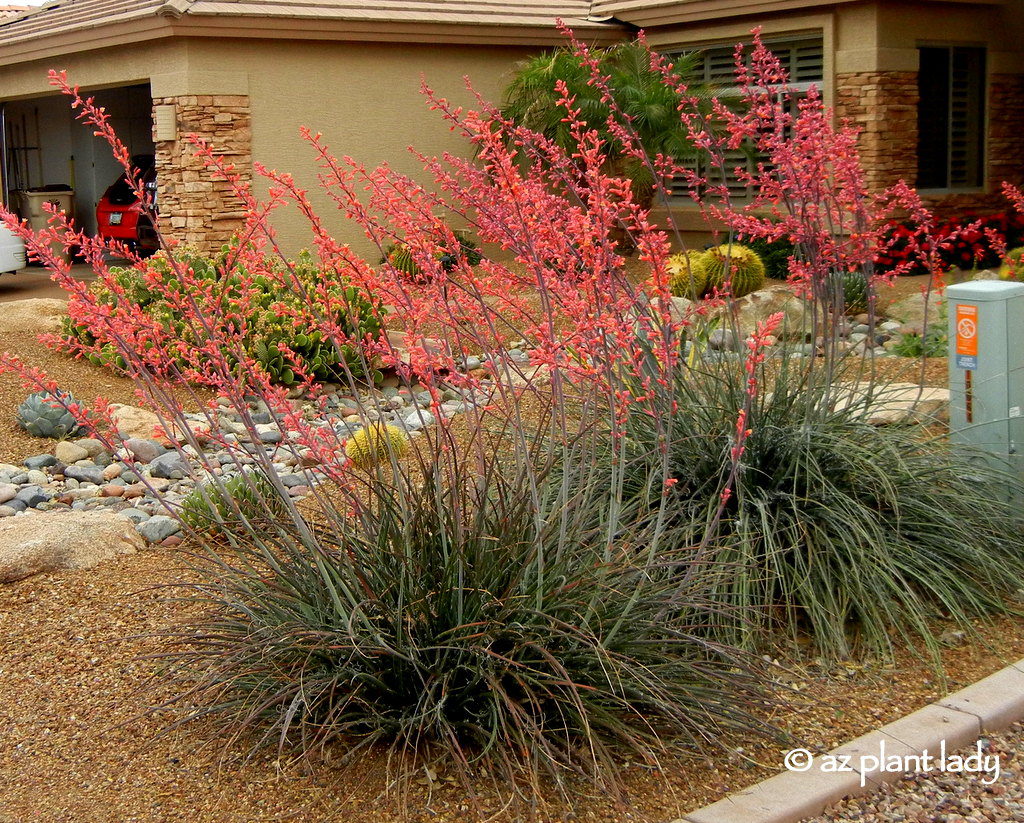
Red Yucca (Hesperaloe parviflora)
Red yucca has the appearance of an ornamental grass, but its leaves are succulent. Coral-colored flowers are borne aloft on tall stalks off and on spring through fall – there is also a yellow variety as well. They look great all year, even when not in flower and are well worth adding to your outdoor space.
Learn more about red yucca.
So if you are tired of having to prune and fertilize plants through summer, I invite you to try one of these 10 fuss-free summer plants.**Do you have a favorite fuss free plants for summer?


